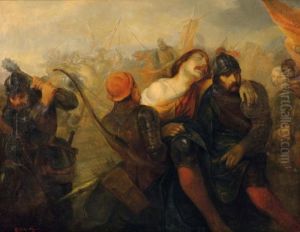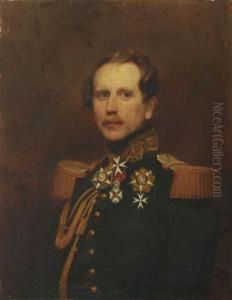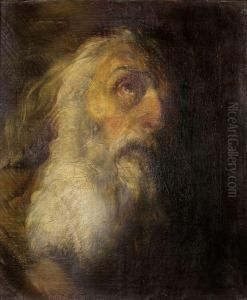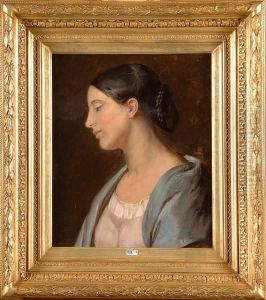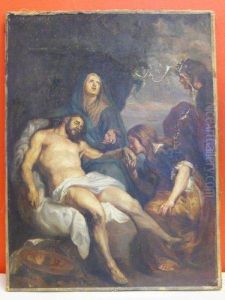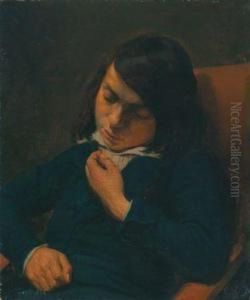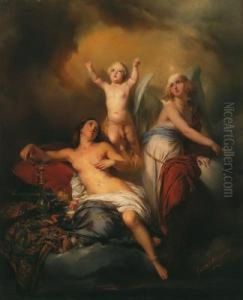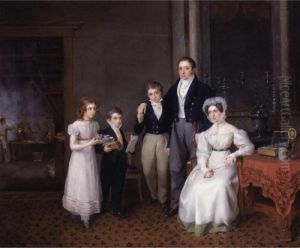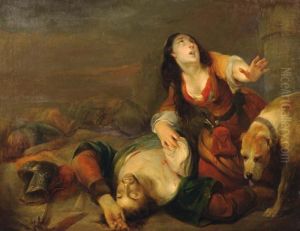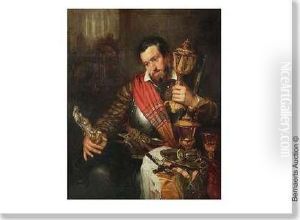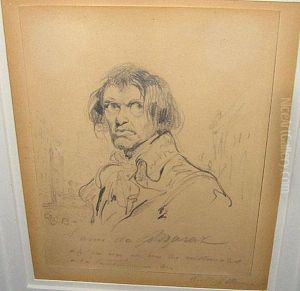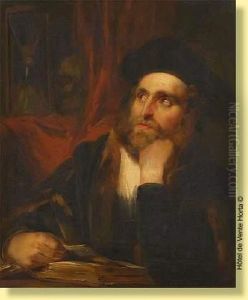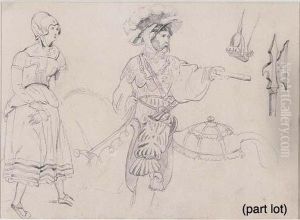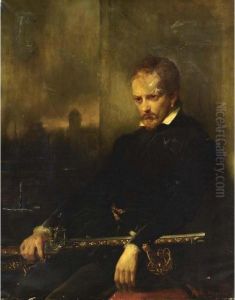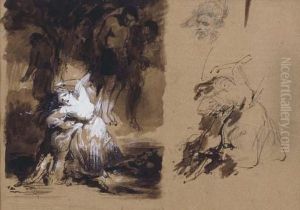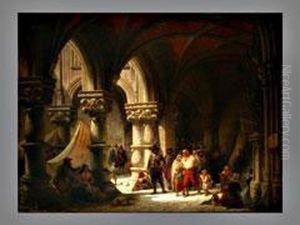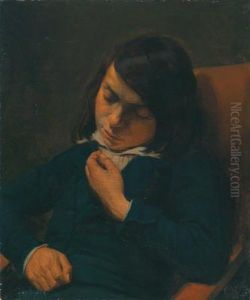Gustaaf Wappers Paintings
Gustaaf Wappers, whose full name is Egide Charles Gustave, Baron Wappers, was a prominent Belgian romantic painter born on August 23, 1803, in Antwerp. He is known for his historical paintings and his role in the Romantic movement that swept through European art during the early 19th century. Wappers studied at the Royal Academy of Fine Arts in Antwerp and later became influenced by the works of Peter Paul Rubens as well as the French Romantic painters.
In 1832, Wappers gained widespread recognition with his work 'The Episode of the Belgian Revolution of 1830,' which is considered one of his masterpieces. This painting, which depicted the Belgian struggle for independence from the Dutch, resonated with the public and was highly acclaimed for its emotional intensity and dramatic style. Wappers' paintings are characterized by their vivid color, energetic brushwork, and emphasis on historical narratives.
Wappers was appointed as a professor at the Antwerp Academy and later served as its director from 1840 to 1853. During his tenure, he played a pivotal role in modernizing the Academy and promoting the Romantic style in Belgium. His influence extended to his students, many of whom went on to become notable artists themselves.
In 1844, King Leopold I of Belgium ennobled Wappers, granting him the title of Baron. This honor reflected the esteem in which he was held as an artist and his contributions to Belgian culture. Wappers continued to create significant works throughout his career, though his later years saw a decline in the popularity of Romanticism, as the art world began to shift towards Realism and other emerging movements.
Gustaaf Wappers died on December 6, 1874, in Paris, where he had moved in the latter part of his life. Despite the changing tastes in art, his legacy as a leading figure in Belgian Romanticism endures, and his works remain celebrated for their emotional power and historical significance.
